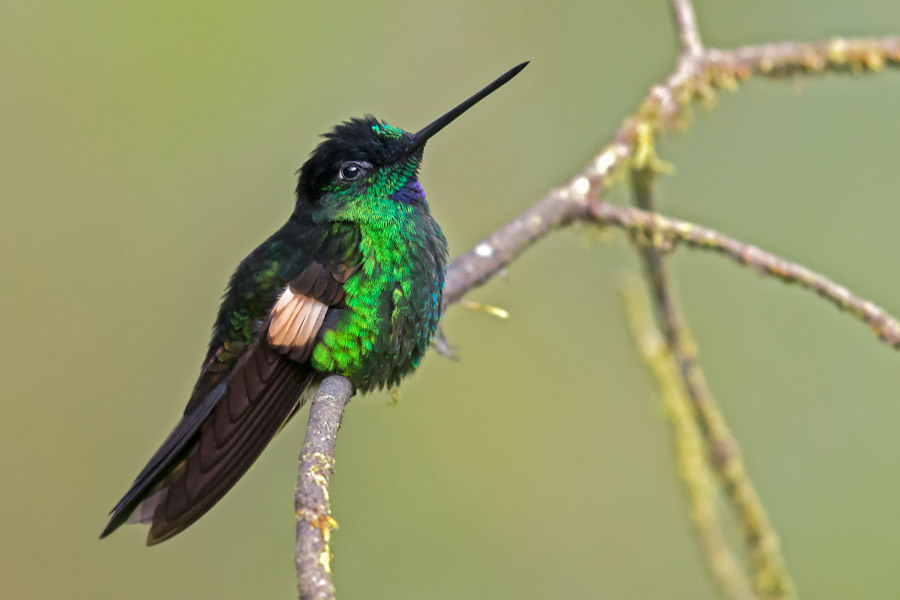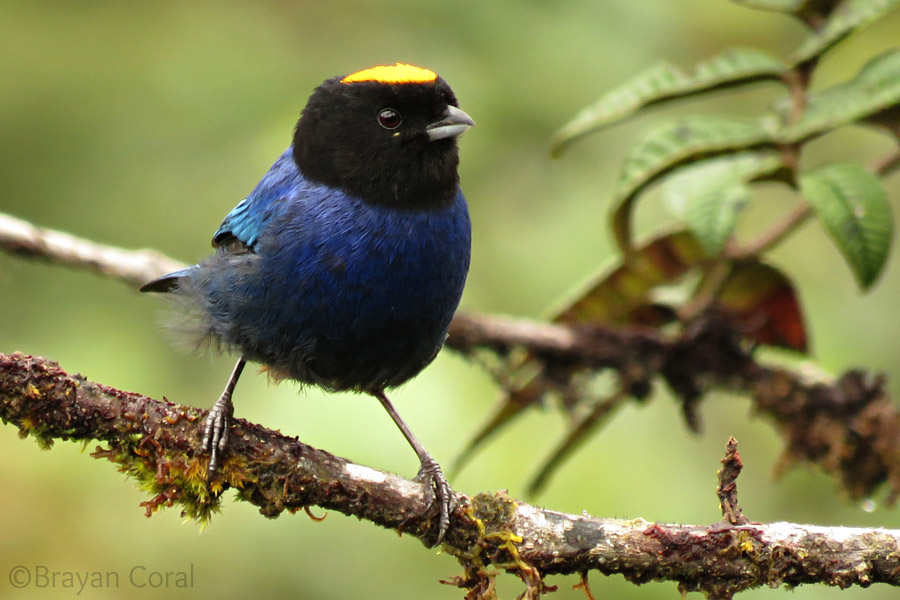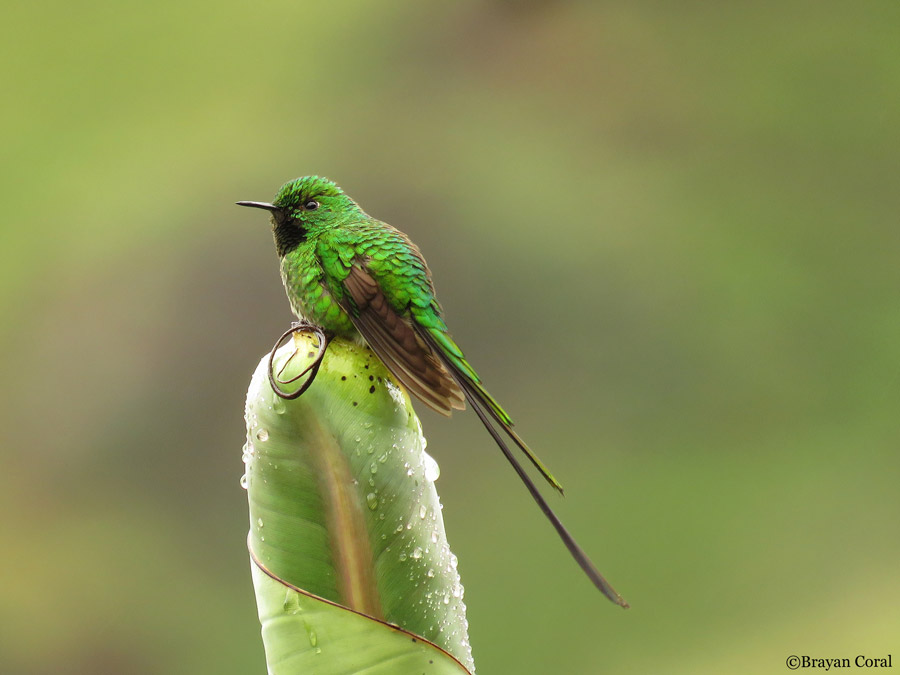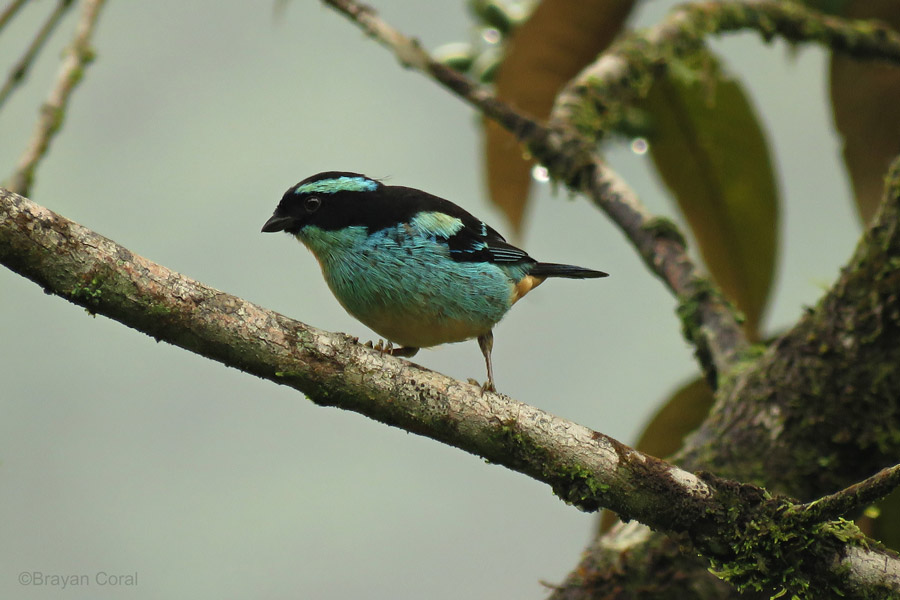The Colombian Massif and Putumayo region in southwestern Colombia is rapidly being recognized as the next go-to destination for birding in the country. The area has only recently opened up to tourism, so it is relatively unexplored and sure to be hiding many surprises for birders. The Colombian Massif is a Unesco Biosphere Reserve, and one of the principal fresh water producing regions, giving birth to five of Colombia’s most important rivers: the Cauca, the Magdalena, the Patía, the Putumayo and the Caquetá. Here, there are no distinct Andean ranges like we find in the rest of the country. Instead, there is one big mass of mountains, hence the name. In the Putumayo state, the massif descends towards Amazonian piedmont and eventually Amazonian lowlands, owing to this route’s mind-boggling diversity.
Best Months to Visit:
December to early March and late June to early September.
Connecting Routes:
Easily by land with the Central Andes and the Northern Portion of the Western Andes route and the Western Andes and Cauca Valley route. Easily by air with any of our other Colombia routes.
AREAS IN THIS ROUTE
The park was created in 1968 to protect 83,000 hectares (205,000 acres) of Andean cloud forest and parmos in a volcanic region near the colonial city of Popayan. There are records of more than 200 species in the park.
Targets
Andean Condor, Carunculated Caracara, Scarlet-bellied Mountain-tanager, Golden-breasted Puffleg, Rufous-vented Whitetip, Black-chested Mountain-tanager, Black-chested Fruiteater, Rainbow-bearded Thornbill (NE), Black-backed Bush-tanager (NE), Glowing Puffleg (NE), Noble Snipe.
This paramo lies along the pass that connects La Cocha Lagoon with the Sibundoy Valley, and is home to some of the more localized species in Colombia. The hike is strenuous, directly up a hill that can be muddy, but the ornithological reward makes it all worth while.
Targets:
Bogota Rail (E), Silvery-throated Spinetail (E), Apolinar’s Wren (E), Nobel Snipe, Subtropical Doradito, Spot-flanked Gallinule, Rufous-browed Conebill.
At 2,280 m (7,500 ft), this natural lake with glacial origins is the largest in Colombia, covering approximately 4,000 hectares (10,000 acres). The area provides excellent birding in open water, wetlands, and forest, and is unique for being home to the lowest elevation paramo ecosystems on the planet.
Targets:
Andean Gull, Slate-colored Coot, Yellow-billed Pintail, Silvery Grebe, Cinereous Harrier, Sora, Virginia Rail, Subtropical Doradito, Cinereous Conebill, Speckle-faced Parrot, Grey-breatsed Mountain-toucan, Spectacled Whitestart, Plain-colored Seedeater, Green-tailed Trainbearers, Black-tailed Trainbearers, Buff-winged Starfrontlet.
This is ultimately one of Colombia’s last birding frontiers, finally accessible to birders. The road that descends from the town of Sibundoy to the city of Mocoa, wholly in the Putumayo state, has been recently dubbed by local biologists as the Trampoline of Diversity. This is due the abundance of switch-backs along the 1,800 m (6,000 ft) descent from Andean cloud forests to the Amazonian piedmont.
Targets:
Red-bellied Grackle (E), White-rimmed Brush-finch (NE), Spectacled Whitestart (NE)Deep-blue Flowerpiercer, Rufous-breasted Flycatcher (NE), Flame-faced Tanager, Yellow-throated Tanager, Orange-eared Tanager, Long-tailed Tapaculo, Streaked Tuftedcheek, Chestnut-bellied Thrush, Handsome Flycatcher, Green-fronted Lancebill, White-tailed Hillstar, Wire-crested Thorntail, Black-and-chestnut Eagle.
Mocoa is the capital of the Putumayo state and much of the city was destroyed by a landslide on the morning of April 1, 2017. However, much of the hotel infrastructure survived and the resilient and cohesive community has taken great strides to bounce back to normalcy. One of their main strategies is to promote eco-tourism as a means to bring prosperity back to the area in a sustainable manner. Nestled at the base of the Colombian Massif, Mocoa is strategically situated to offer access to the mountains as well as the Amazonian piedmont and Amazonian lowlands.
Targets:
Cream-colored Woodpecker, Chestnut Woodpecker, Plum-throated Cotinga, Violaceous Jay, Lettered Aracari, Chestnut-eared Aracari, Glittering-throated Emerald, Magpie Tanager, Gilded Barbet, Paradise Tanager.
A UNESCO world heritage since 1995, San Agustin presents the largest group of religious monuments and megalithic sculptures in South America and also provides nice habitat for some great birding. The archaeological landscape hosts sculptures that resemble human and animal figures with threatening, smiling, or somber faces. The Agustin culture dominated the area, but who these people were, where they came from, what the exact purpose of the gigantic sculptures was, and to what extent the culture was connected to other known cultures that lived in the area at the time, remains unknown.
Targets:
Dusky-headed Brush-finch (E). Colombian Chachalaca (E), Specatcled Parrotlet (NE), Bar-crested Antshrike (NE), Blue-browed Tanager, Olivaceous Piculet, Yellow-breasted Antwren, Olivacious Piha, Cerulean Warbler.
CONTACT US
SEND US A MESSAGE
CONTACT INFORMATION
For more information, questions, availability or to register for a Colombia Birdwatch tour, please contact Christopher Calonje at:







